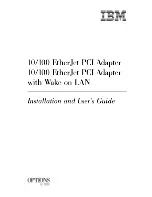
5-14 Operation
MN1903
This problem is overcome by using a term called
Integral gain
(
KINT
). This sums the error
over time, so that the motor torque is gradually increased until the positional error is reduced to
zero [
like a person gradually pushing harder and harder on your car until they’ve pushed it
level with
Demand].
However, if there is large load on the motor (it is supporting a heavy suspended weight for
example), it is possible for the output to increase to 100% demand. This effect can be limited
using the
KINTLIMIT
keyword which limits the effect of KINT to a given percentage of the
demand output. Another keyword called
KINTMODE
can even turn off integral action when it’s
not needed.
The remaining gain terms are
Velocity Feed forward
(
KVELFF
) and
Acceleration Feed
forward
(
KACCEL
) described below.
In summary, the following rules can be used as a guide:
H
KPROP: Increasing KPROP will speed up the response and reduce the effect of
disturbances and load variations. The side effect of increasing KPROP is that it also
increases the overshoot, and if set too high it will cause the system to become unstable.
The aim is to set the Proportional gain as high as possible without getting overshoot,
instability or hunting on an encoder edge when stationary (the motor will buzz).
H
KVEL: This gain has a damping effect, and can be increased to reduce any overshoot. If
KVEL becomes too large it will amplify any noise on the velocity measurement and
introduce oscillations.
H
KINT: This gain has a de-stabilizing effect, but a small amount can be used to reduce any
steady state errors. By default, KINTMODE is set so that the KINT term is either ignored,
or is only applied during periods of constant velocity.
H
KINTLIMIT: The integration limit determines the maximum value of the effect of integral
action. This is specified as a percentage of the full scale demand.
H
KDERIV: This gain has a damping effect. The Derivative action has the same effect as
the velocity feedback if the velocity feedback and feedforward terms are equal.
H
KVELFF: This is a feed forward term and as such has a different effect on the servo
system than the previous gains. KVELFF is outside the closed loop and therefore does
not have an effect on system stability. This gain allows a faster response to demand
speed changes with lower following errors, for example you would increase KVELFF to
reduce the following error during the slew section of a trapezoidal move. The trapezoidal
test move can be used to fine-tune this gain. This term is especially useful with velocity
controlled servos
H
KACCEL: This term is designed to reduce velocity overshoots on high acceleration
moves. Due to the quantization of the positional data and the speed of the servo loop, for
the acceleration feed forward term to affect the servo loop the acceleration of the axis
must exceed 1,000,000 encoder counts per second.
Summary of Contents for NextMove PCI
Page 1: ...NextMove PCI Motion Controller MOTION CONTROL Installation Manual 3 02 MN1903...
Page 2: ......
Page 6: ...iv Contents MN1903...
Page 16: ...3 4 Basic Installation MN1903...
Page 42: ...4 26 Input Output MN1903...
Page 57: ...Operation 5 15 MN1903 Figure 11 The NextMove PCI servo loop...
Page 74: ...5 32 Operation MN1903...
Page 90: ...A 8 Accessories MN1903...
Page 91: ......
















































